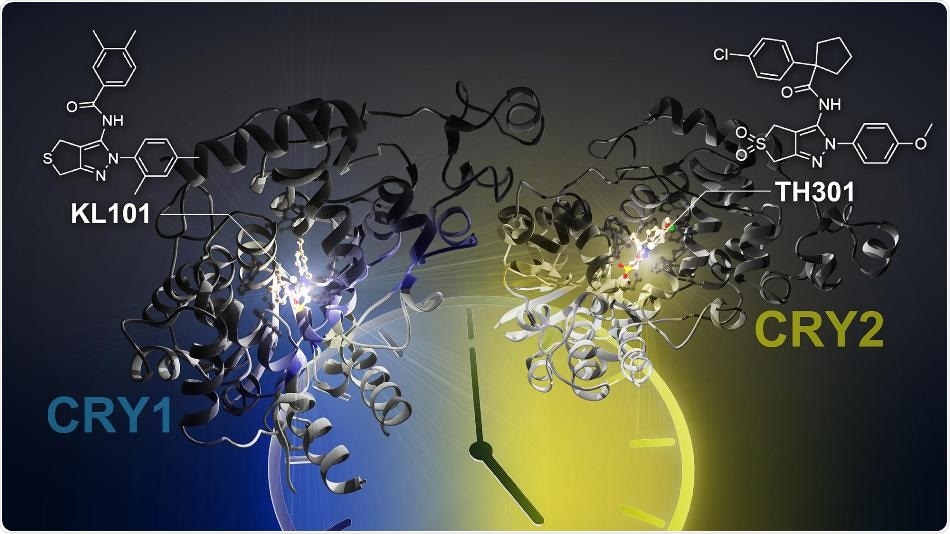Researchers have successfully identified novel compounds to prolong the period of the circadian clock and have also explained their mechanisms of action.

New small molecules KL101 and TH301 target CRY1 and CRY2, respectively, to control the circadian clock. Image Credit: Issey Takahashi.
The research team included Designated Associate Professor Tsuyoshi Hirota and Postdoctoral Fellows Simon Miller and Yoshiki Aikawa from the Nagoya University Institute of Transformative Bio-Molecules.
The circadian clock is known to regulate diverse biological phenomena that take place throughout the day, like waking and sleeping. Researchers have linked perturbation of the circadian clock with several diseases, like cancer, metabolic syndrome, and sleep disorders.
Small-molecule compounds have been developed to control certain components of the circadian clock, which makes it possible to explain the molecular basis of the function of the clock. This also offers a platform for the therapeutic treatment of diseases associated with the circadian clock.
In this research, the scientists identified the small molecules—called TH301 and KL101—that prolong the duration of the circadian clock. They also discovered that KL101 and TH301 are the original compounds that selectively and respectively target the CRY1 and CRY2 clock components.
To determine the structures, the researchers used X-ray crystallography and demonstrated how KL101 and TH301 attach to CRY1 and CRY2, respectively.
But additional experiments were needed to ascertain the selectivity mechanism of the CRY1 and CRY2 clock components. It was observed that compound selectivity is imparted by the chaotic tail regions of CRY proteins.
In association with Project Associate Professor Megumi Hatori and Postdoctoral Fellow You Lee Son from the Keio University School of Medicine, the researchers also discovered that both CRY1 and CRY2 are needed for the differentiation of brown adipocytes and that both TH301 and KL101are predicted to offer a promising basis for the therapeutic treatment of obesity.
Source:
Journal reference:
Miller, S., et al. (2020) Isoform-selective regulation of mammalian cryptochromes. Nature Chemical Biology. doi.org/10.1038/s41589-020-0505-1.